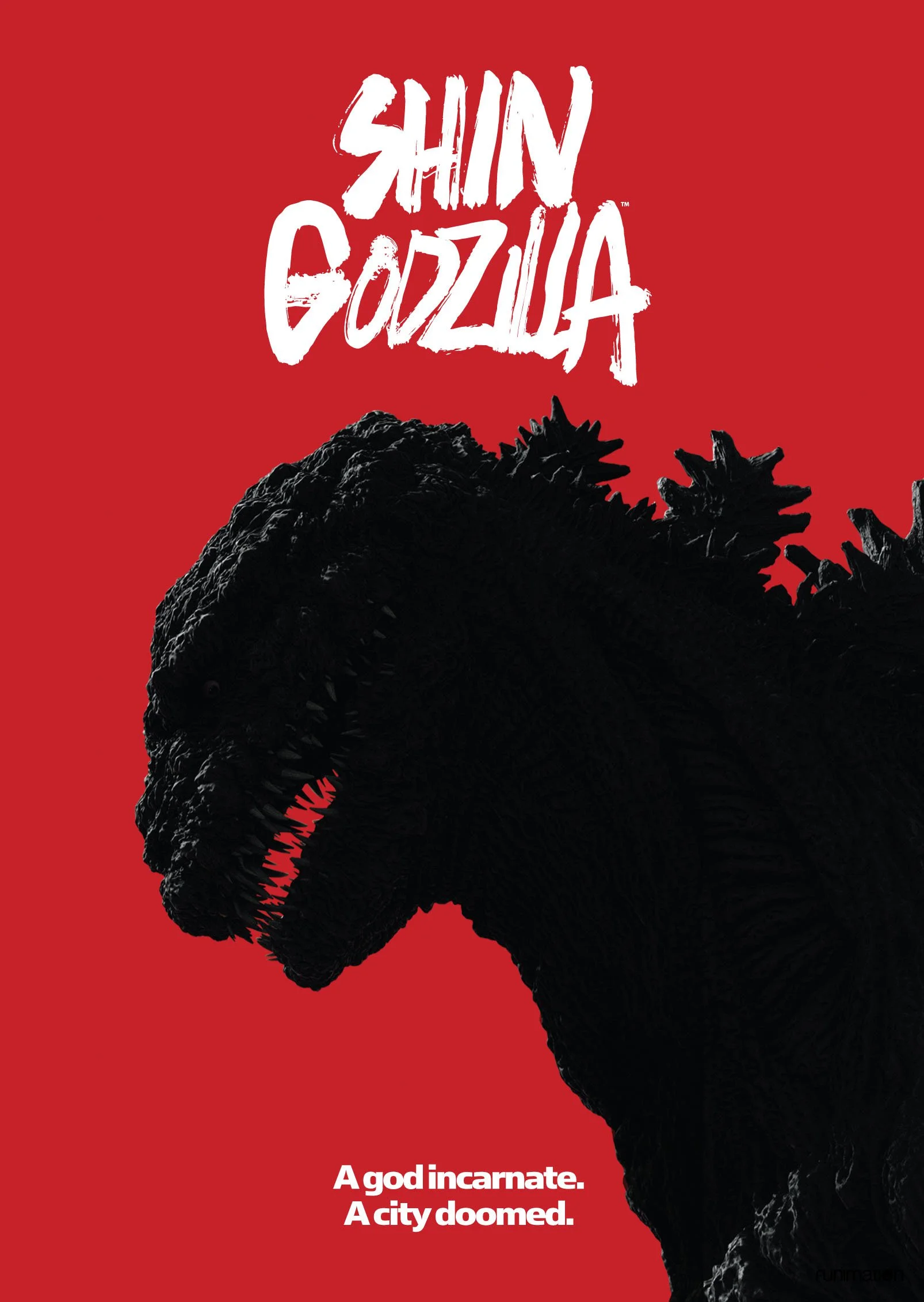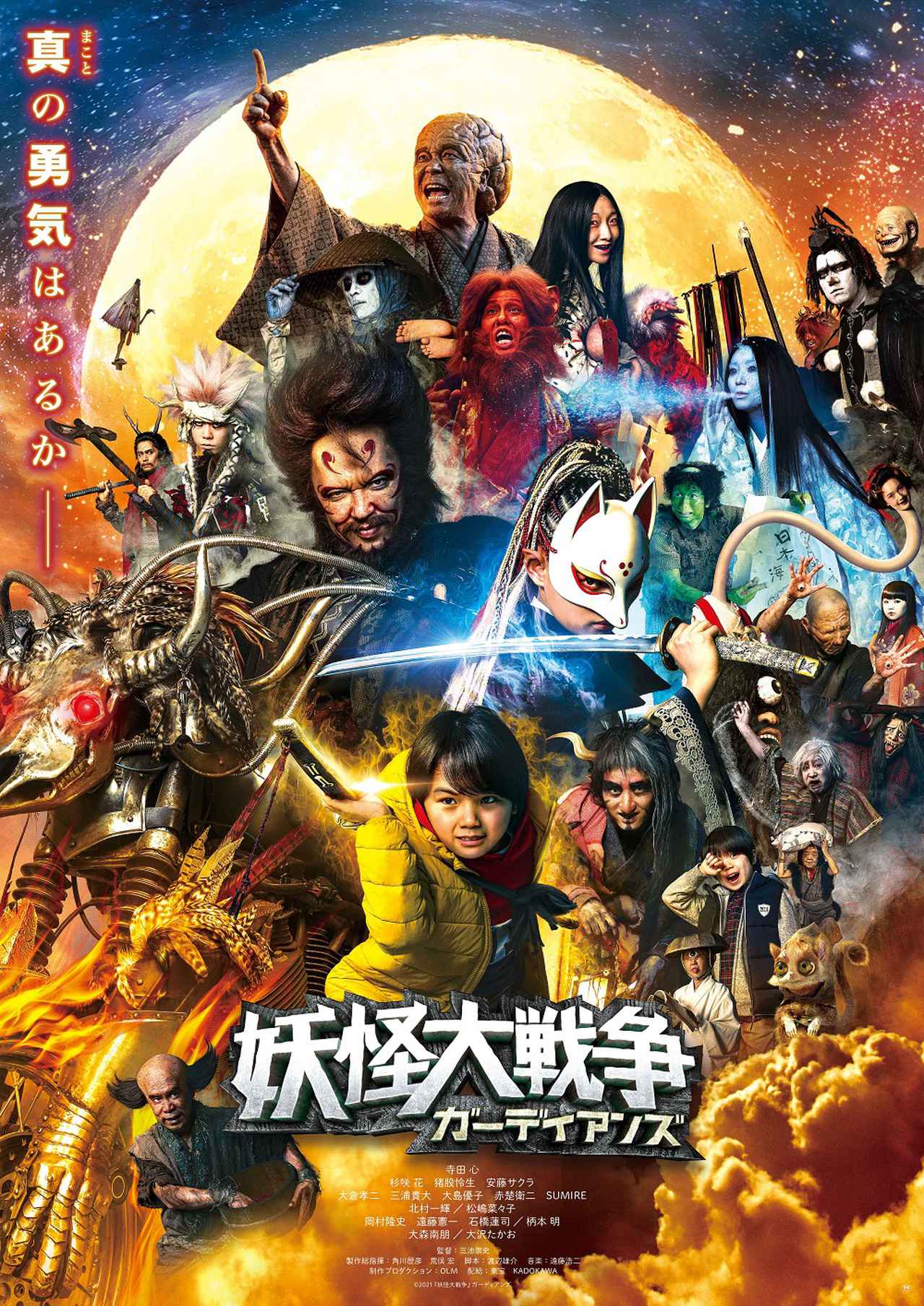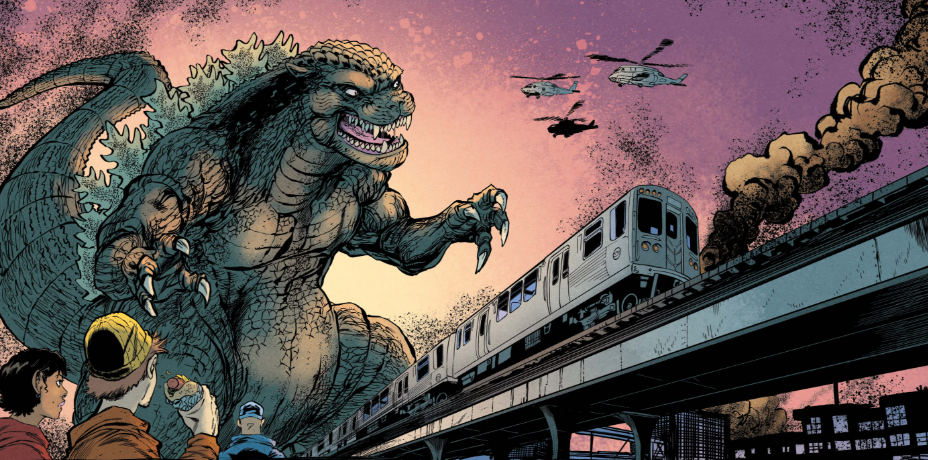Director: Hideaki Anno and Shinji Higuchi
Starring: Hiroki Hasegawa, Satomi Ishihara, Jun Kunimiura, Yutaka Takenouchi, Mikako Ichikawa
The sudden appearance of a massive creature in Tokyo Bay damages tunnels, destroys buildings, and kills dozens of people. As the Japanese government scrambles to assess and devise a counterattack the situation, response is slowed because of bureaucracy and old-Japan legislation. When the creature disappears, leaving destruction in its wake, the government attempts to mitigate the devastation when the creature returns; larger, stronger, and more capable than ever of destroying the city. Learning from the lack of response of the earlier attack, younger politicians, bureaucrats, scientists, and other fringe experts must develop a plan of attack to stop the legendary beast Godzilla from laying waste to the country.
After the huge success of Legendary Pictures’ Godzilla film from 2014, Toho felt the need to revive the iconic King of Monsters for a more traditional and definitely more Japanese film that would go on to be the most successful Godzilla film ever released in its native land. Amid impressive box office and an almost unprecedented short release window from its Japanese premiere, Shin Godzilla arrives to the United States through a limited engagement from Funimation Films. So does it live up to the hype? Or does it fizzle like the action heavy but mess of a film that was the previous final film in the Godzilla series, Final Wars?
With a screenplay from animator Hideaki Anno (Neon Genesis Evangelion) who also shared directorial credit with genre director Shinji Higuchi, Shin Godzilla delivers a much more adult Godzilla film; one more in line with the original 1954 Ishiro Honda classic and less with the campy merchandise driven releases such as Vs. Megalon. Utilizing a ground level approach, specifically with government and bureaucratic red tape, the film is a very present piece of populist Japanese filmmaking. While it more than handily presents the original theme of fear of nuclear attack from the atom bomb, and more recently the Fukushima disaster caused by the Tohoku earthquake and tsunami, it also serves as a somewhat scathing critique of the current Conservative government of Japan. Filled with nationalism and a sense of self preservation, there has been quite a number of protests and criticism on this old-school brand of government from scholars, students, and in this case, the generally liberal entertainment industry.

Generally dialogue heavy, the film is not the type of Godzilla film that will satisfy those looking for throwdown action and a blockbuster type action picture. I would honestly say that most younger children would probably get bored easily and while the actual appearances of Godzilla are pretty great, they may be too few and far between for a generation that tends to have a tokusatsu view of monster films. I wouldn’t even categorize the film as a slow burn as there is tendency to keep dynamic visuals on screen at almost all time. This certainly helps when the film does linger on shots, like a reference to Hiroshima punctuated with newspaper images which visually illustrate such an inherited fear among the Japanese, which can deliver a shot to the gut as you are reminded of exactly the stakes in which this film inhabits.
Fans of Anno’s Evangelion series will find much that is familiar here; from the titling of characters, camera shots, use of perspective, and the general tone of the film, it seems that Anno has definitely brought his experienced eye in animation to a logically sound live action take. There are even flourishes like a familiar musical reprisal used in the film that Eva fans will have no trouble recalling and more than a handful of recreated shots from the series just filmed with his new characters within the films’ context. Higuchi himself puts his stamp on the film with his use of government awareness and the very thrilling and well shot scenes of destruction. During the screening I thought that the film reminded me quite a bit of Higuchi’s film The Sinking of Japan, itself a remake of the Toho disaster classic, and it shares much more than visual aesthetic with that film. Between Anno and Higuchi, we get a film that straddles the line between political drama and a believable more grounded disaster film. It’s a mix that shouldn’t work but does.

The film is a veritable who’s who of Japanese cinema with special focus on Hiroki Hasegawa as Yaguchi, a junior politician who steps up to provide a method of stopping Godzilla while preserving the infrastructure to keep Japan viable after such a disaster and Satomi Ishihara who plays Kayoco Patterson, a mixed American in a similar position as Yaguchi. Between them is Yutaka Takenouchi who plays the high ranking aide to the PM Akasaka who is the mentor to Yaguchi and in position to afford much needed change within the stagnating government. Besides these, the film is peppered with such recognizable character actors and cameos such as Jun Kunimura, Kanji Tsuda, Atsuko Maeda, and Pierre Taki among many others. Higuchi even is able to smuggle fellow directors Shinya Tsukamoto, Isshin Inudo, and Kazuo Hara into the mix. It’s a loaded cast and I’m certain subsequent viewings will find the avid fan finding more faces throughout.
Godzilla himself is seen in multiple iterations. From destructive but oddly comical to the heavily intimidating form seen in most of the promotional elements, the King of Monsters is in the film for a very limited amount. At his most destructive, Godzilla exudes an almost painful strength; as if he is suffering through his ascent to power. There is an almost body-horror element to Godzilla in this, infusing him with a bit of empathy to the audience even though he/she is ostensibly the antagonist. While it isn’t often that Godzilla gets to cut loose, when he does, it is done in some ways never before done within this genre. From his iconic atomic breath to some never-before-seen abilities, Godzilla is as formidable as ever. Captured through motion capture, Godzilla does seem to lose a bit when the visual effects don’t stack up, but overall, the film does look good.

In the end, Shin Godzilla is a mature monster film that tackles the human level of an attack. While set up in the upper echelons of governmental administration, it tends to meander more than a little for most tastes, but its prescient storytelling and effective acting coupled with the exciting scenes of destruction would cement itself as one more effective and technically superior films in the entire franchise.





